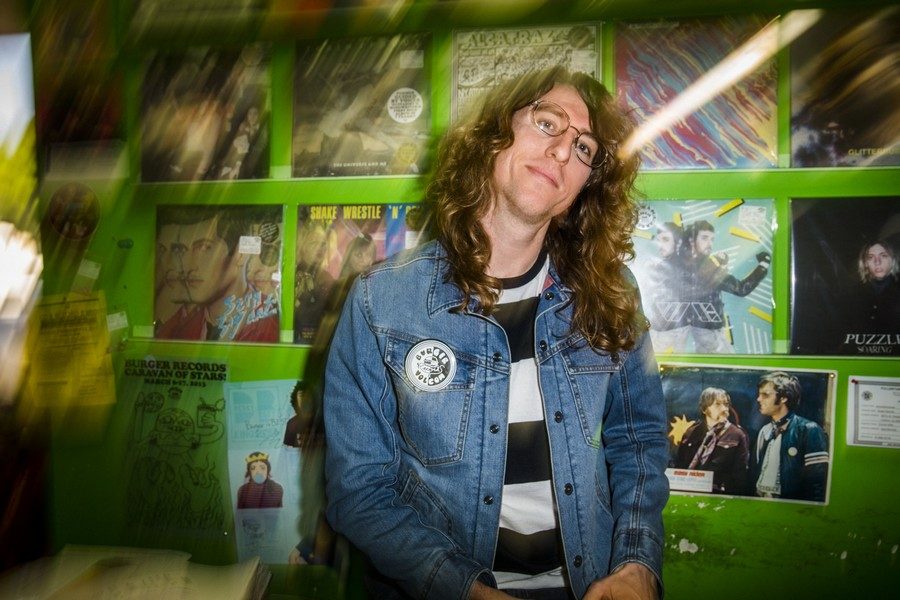

His process is people-first, not product-first, creating unique, often gem-like music. "I want to talk about why I'm doing this, and how I'm doing this," he's said. Each concert experience is unique, shaped by his candid, vulnerable interactions with collaborating musicians and the audience. Most importantly, DePlume brings a valuable transparency to his work. His songs are built on sonorous circular melodies and luminous tones that transmit calmness and generosity in warm waves-unless they're raging against complacency and the everyday inhumanity of end-times capitalism. Music Video: "Fables," by by Rahill, featuring Beck.īritish poet and saxophonist Alabaster DePlume uses his performances to encourage his audiences, and to recognize and appreciate them for the simple, yet laudable, act of living. The first single, "Fables," is a blissful and kaleidoscopic pop song produced and featuring none other than art-pop icon, Beck. This new album documents her efflorescence as a singer/songwriter with waves of maturity, humility, and intimacy in a succession of deeply personal, contemplative, and radiant songs. Maps of her familial cities, Shiraz and Isfahan, grace the insert of her debut LP, Flowers at Your Feet. This affinity for Iranian culture and music is increasingly present in her emergent solo output. As a founding member of Brooklyn's garage-rock mainstay, Habibi, Rahill garnered a reputation for alchemizing an eclectic range of influences, distilling them into captivating and heavy pop songs that gestured towards the modes and melodies of the Iranian American household in which she was raised-a heritage she nurtured during several trips to Iran. Rahill is a multidisciplinary artist and musician hailing from Michigan and now based in New York's Hudson Valley. Music video: "Toubouk Ine Chihoussay," by Etran de L'Aïr. Playing for over 25 years, Etran de L'Aïr first emerged as favorites of Agadez's local wedding circuit their music is rooted in celebration, invoking the exuberance of a vibrant intergenerational party.Ĭalled out for their "heady, spontaneous grooves," Etran de L'Aïr was listed in the number 1 slot for "Best Music of 2020" by The New Yorker. Composed of brothers and cousins, Etran de L'Aïr are the sons of Tuareg nomadic families that settled in Agadez, where guitar bands are an integral part of the social fabric, playing at weddings, baptisms, and political rallies, as well as the occasional concert. Beloved for their dynamic repertoire of hypnotic solos and sun-glazed melodies, the band embraces a pan-African style that is emblematic of their hometown, citing a myriad of cultural influences, from Northern Malian blues and Hausa bar bands to Congolese soukous.

Music Video: "Dream Another," by Makaya McCraven.Įtran de L'Aïr (or "stars of the Aïr region") welcomes you to Agadez, Niger-capital city of Saharan rock. It cements his renown as a "cultural synthesizer" and an artist with a unique gift for collapsing space, destroying borders, and blending past, present, and future into poly-textural arrangements of post-genre jazz. According to the New York Times, "McCraven has quietly become one of the best arguments for jazz's vitality."įollowing upon his widely acclaimed 2018 album Universal Beings, McCraven's newest release, In These Times, is the triumphant finale of a project seven years in the making. McCraven believes that the word "jazz" is "insufficient, at best, to describe the phenomenon we're dealing with." Profiled in Vice, Rolling Stone, The Guardian, and NPR, among other publications, his music is at the very vanguard of this indescribable phenomenon.

His music draws from a wide range of influences, including hip-hop, electronica, and folk music. Known for his unique approach to jazz, which blends live improvisation with sampling, he's been described as a "beat scientist" and "one of the most important figures in the jazz world" by critics. Makaya McCraven is a prolific drummer, composer, and producer.


 0 kommentar(er)
0 kommentar(er)
